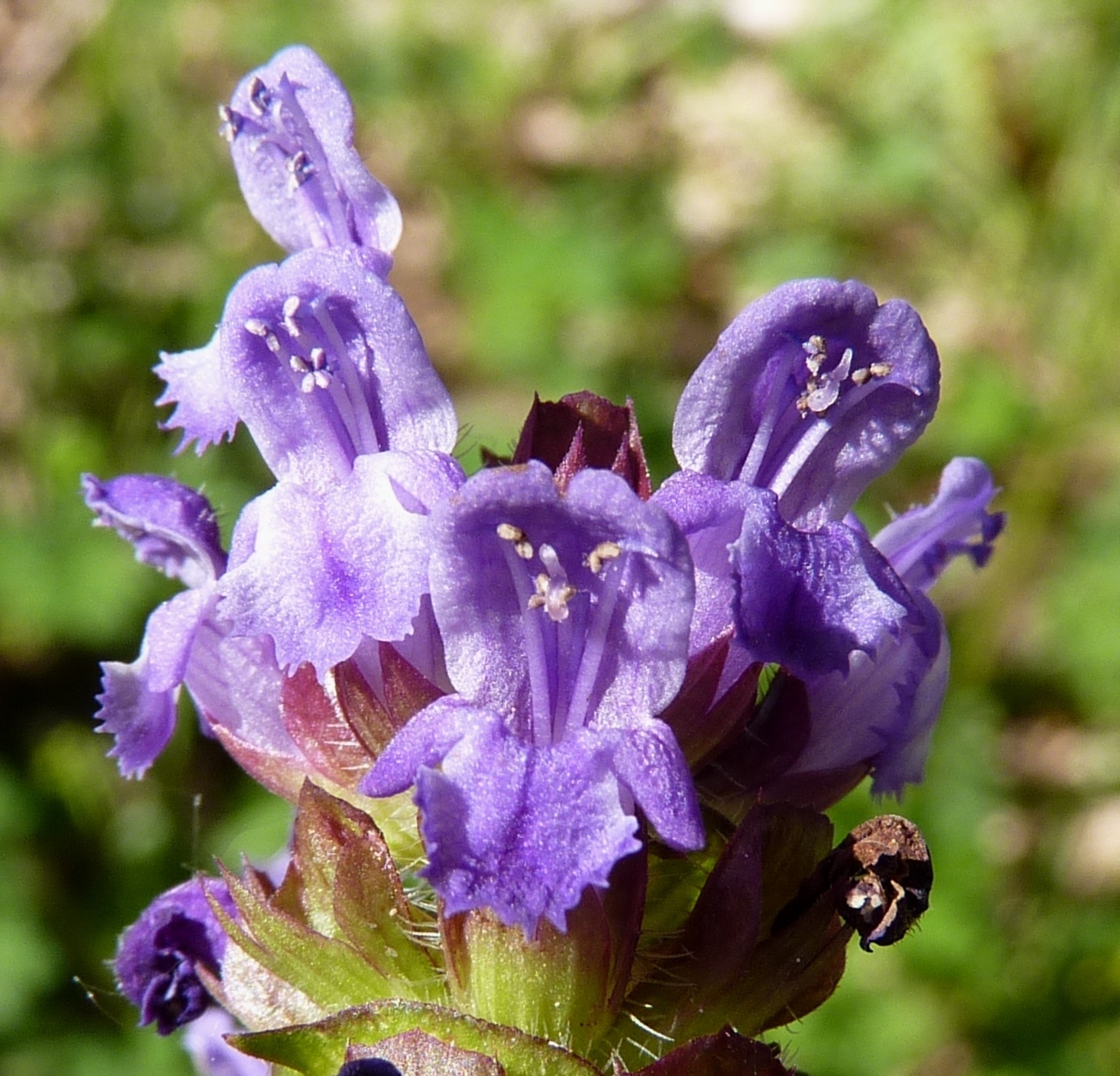
Derived from Brunella, an early name for the genus.
Trailing perennial herbs. Leaves opposite, toothed or entire, stalked. Flower cluster a dense, spike-like head, the whorls each of 4-6 flowers and with leafy, ovate bracts. Flowers short-stalked, with the calyx 2-lipped, bell-shaped, 10-nerved, the upper lip broad and 3-toothed, lower lip narrow, with 2 slender teeth. Corolla 2-lipped, the tube slightly longer than the calyx, upper lip slightly hooded, lower lip bent back. Stamens 4, a long and a short pair, the longer pair lower, protruding. Fruit of 4 smooth but ridged nutlets.
Grown as a trailing groundcover but the running stems may become invasive.
Seed or division.
P. vulgaris is used mainly as a tonic but has many other medicinal uses.
Calyces 2-lipped and with kidney-shaped bracts.
7 species from Eurasia, N Africa and N America.
Source: (2002). Origanum. In: . Horticultural Flora of South-eastern Australia. Volume 4. Flowering plants. Dicotyledons. Part 3. The identification of garden and cultivated plants. University of New South Wales Press.
